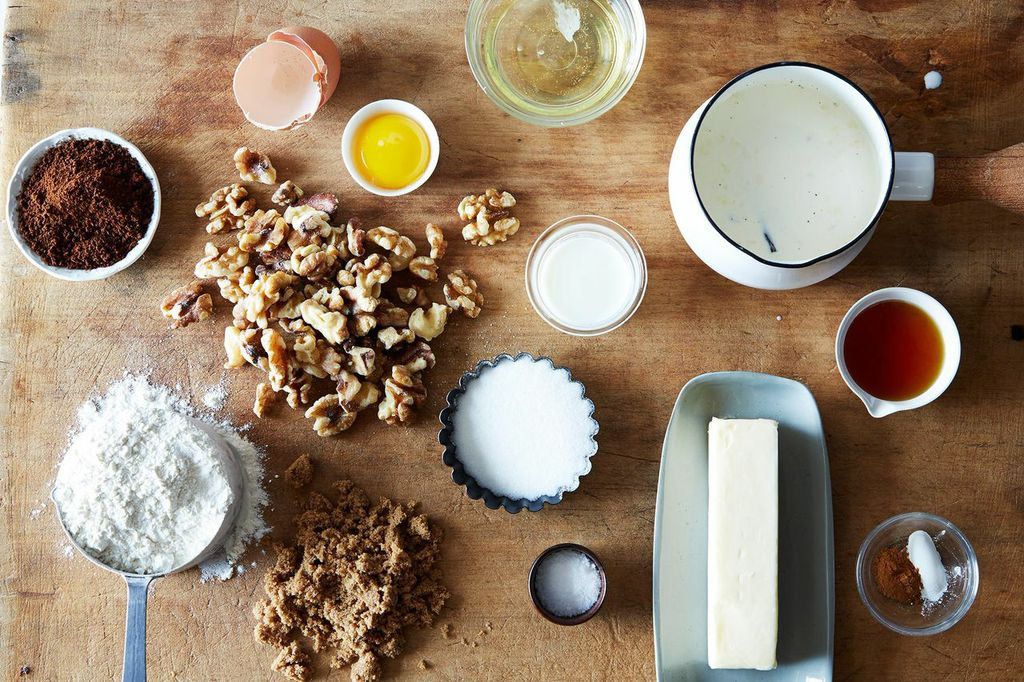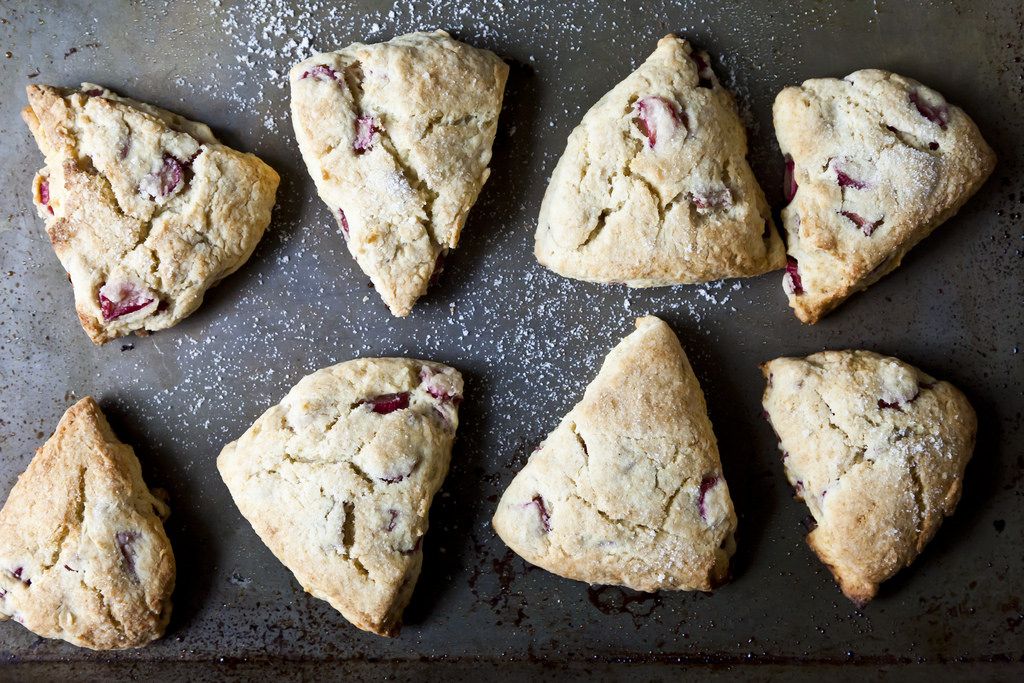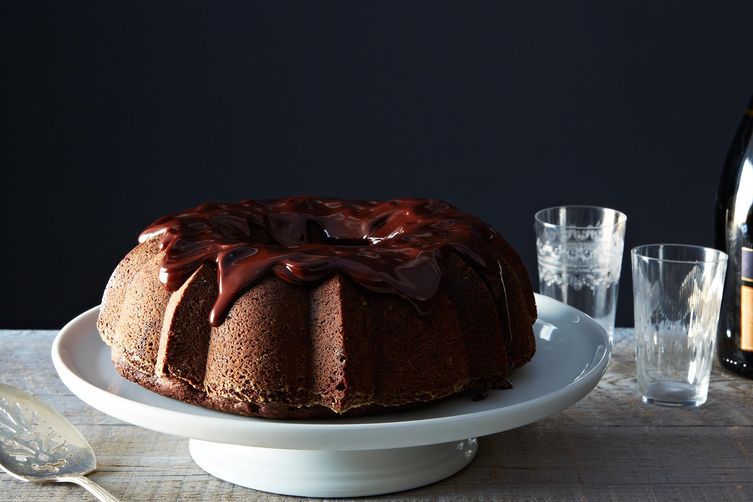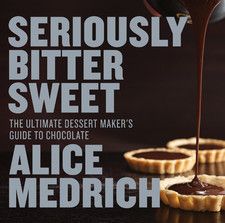Popular on Food52
Continue After Advertisement
29 Comments
Leslie V.
October 1, 2016
Yasmeen
Yes reduce the sugar is in every HA cookbook I own or read.
One enjoyable Cook Book First published in 1903 "Rocky Mountain Cook Book" by Caroline Trask Norton. For High Altitude Cooking.
Baking and all other cooking.
Yes reduce the sugar is in every HA cookbook I own or read.
One enjoyable Cook Book First published in 1903 "Rocky Mountain Cook Book" by Caroline Trask Norton. For High Altitude Cooking.
Baking and all other cooking.
Laura D.
October 1, 2016
I always substitute dairy milk, even buttermilk, with almond milk and so far it's all gone a-okay. I also use gluten free baking blends in place of AP flour all the time. Again with great results. I don't think baking is as finicky as people always think.
Leslie V.
October 1, 2016
My best advisor in baking in Higher altitudes is The Unv of Colorado Ext office cookbooks & webpage. I was raised a sea level and only moved to 4000' the past 9 years. Judith Rae's comment here are a start, but with each 1000' feet the equations change.
Baking is a science. Correct Measurements are important for success. I certainly had many failures until I learned to ask, experiment and make loads of notes.
Food Preservation is another aspect that needs to be extremely researched and followed for safety.
Great article.. It took me several years to find the 'best' IMHO banana bread.. and yes I use ripe but NOT overripe bananas...and rum. Have a great Oct 1st all.
Baking is a science. Correct Measurements are important for success. I certainly had many failures until I learned to ask, experiment and make loads of notes.
Food Preservation is another aspect that needs to be extremely researched and followed for safety.
Great article.. It took me several years to find the 'best' IMHO banana bread.. and yes I use ripe but NOT overripe bananas...and rum. Have a great Oct 1st all.
Dee
July 14, 2015
I am looking for the best substitute for double cream as I can not find it here in the U.S.
Christine M.
July 14, 2015
A couple
Don't dos that I have done and worked well: used almond flour in pineapple upside down cake. Came out amazing! And I sub veggie oil for butter/ lard in pie crust .... Light and flaky!
Don't dos that I have done and worked well: used almond flour in pineapple upside down cake. Came out amazing! And I sub veggie oil for butter/ lard in pie crust .... Light and flaky!
JammiO
June 16, 2014
I've got a muffin recipe that I want to add a substantial amount of pureed strawberries and chia seeds. Is there a way to figure if I need more flour, and if so, about how much, dependent upon my additions? I don't want them too dense and gooey, but I also don't want to screw them all up, either.
Bree
June 16, 2014
When subbing "alternative" flours for part of the flour called for in the recipe, is it best to sub according to the measurement (cups) or the weight (grams) if the recipe gives both?
Donna
June 15, 2014
a tbl. of flax seed ground finely mix in three tbl.of water mix well..is a vegan substitute for egg whites
Denise R.
June 15, 2014
Love all of these substitutions! Has anyone found a good sub for sodium in baked goods? I know there are sodium free versions of both baking powder and soda, but in my opinion both leave a flat, almost metallic taste to the finished product.
Laura415
June 15, 2014
Oh I forgot to add that if you want to add things like nuts, dried fruits etc to cakes and want to avoid them sinking one way is to try coating them with dry flour by shaking them in a bag with a little bit of flour. This slows them down and even stops them from sinking as the cake bakes.
Whole grain flours should almost always be mixed in along with non whole grain flours unless you like the heavy texture. In bread baking I always autolyse the dough for 20 minutes to allow the heavier whole grain flour to soak up the liquid. The reason to do this is to avoid adding more liquid because the dough looks dry and accidentally adding too much liquid. The effect isn't as obvious in cakes because they often use more liquid ingredients, but with whole grains they usually can use more time in contact with the liquids before more liquid is added.
Whole grain flours should almost always be mixed in along with non whole grain flours unless you like the heavy texture. In bread baking I always autolyse the dough for 20 minutes to allow the heavier whole grain flour to soak up the liquid. The reason to do this is to avoid adding more liquid because the dough looks dry and accidentally adding too much liquid. The effect isn't as obvious in cakes because they often use more liquid ingredients, but with whole grains they usually can use more time in contact with the liquids before more liquid is added.
Laura415
June 15, 2014
I'm and experienced baker and now a GF baker as well and wish these tips had included more of the reasons why you do or don't want to substitute structural ingredients in baking recipes. My advice for recipe tinkerers is to get a copy of Harold McGee's book The Science of cooking and read about individual ingredients before you substitute. Once cooks understand the what ingredients do in a recipe the more likely they can substitute successfully.
Fats: creates tenderness and/or flakiness (sp) in baked goods. Fats that solidify at room temp create a different texture so subbing with liquid oils can work in something like a cake because the cake will not harden up like it would if you used butter. Some cakes work best with butter tho. If the recipe calls for oil don't automatically sub butter or other hard fat.
Acids: can be flavoring or used as a catalyst for rising via baking soda. My favorite way to add more acid flavor to a recipe without adding more liquid (lemon juice etc) is to add a small amount of granulated citric acid. Great stuff to have around.
Eggs: Emulsifiers, fats and create air and rising in baking. I don't know enough about eggless baking to advise but for GF baking whipping egg whites separately and folding into the average cake recipe is a good strategy for getting GF cakes to rise better without the Gluten. McGee's chapter or Michael Rhulman's book about eggs are great reads.
Sugar: Sugar draws water so creates moisture and tenderness in baked goods. Reduce the sugar by too much and you may find it tough and dry. Experiment wisely. Again McGee is great to read about sugar and how it works.
Flours: Gluten free flours work best in baking when the item doesn't need a lot of structure like cakes, quick breads, biscuits, cookies. GF makes a more tender product as well. Regular yeast breads, pie crusts, pizza dough are all harder to make with GF flours. Adjust expectations but continue to experiment. Happy baking:)
Fats: creates tenderness and/or flakiness (sp) in baked goods. Fats that solidify at room temp create a different texture so subbing with liquid oils can work in something like a cake because the cake will not harden up like it would if you used butter. Some cakes work best with butter tho. If the recipe calls for oil don't automatically sub butter or other hard fat.
Acids: can be flavoring or used as a catalyst for rising via baking soda. My favorite way to add more acid flavor to a recipe without adding more liquid (lemon juice etc) is to add a small amount of granulated citric acid. Great stuff to have around.
Eggs: Emulsifiers, fats and create air and rising in baking. I don't know enough about eggless baking to advise but for GF baking whipping egg whites separately and folding into the average cake recipe is a good strategy for getting GF cakes to rise better without the Gluten. McGee's chapter or Michael Rhulman's book about eggs are great reads.
Sugar: Sugar draws water so creates moisture and tenderness in baked goods. Reduce the sugar by too much and you may find it tough and dry. Experiment wisely. Again McGee is great to read about sugar and how it works.
Flours: Gluten free flours work best in baking when the item doesn't need a lot of structure like cakes, quick breads, biscuits, cookies. GF makes a more tender product as well. Regular yeast breads, pie crusts, pizza dough are all harder to make with GF flours. Adjust expectations but continue to experiment. Happy baking:)
Amelia S.
June 15, 2014
Brilliant and timely as usual, Alice! Good reminders as I rework old family cake recipes for my new book--many thanks.
Scribbles
June 15, 2014
Thanks for these great tips and reminders. I love baked goods and have found out I am not the best baker so all assistance is appreciated!
pearly
June 15, 2014
Love the photos and food on this site and the approach to the subject matter is really nice also. When I need to substitute fats, margarine is not an option. There is a lot of information on the unhealthy benefits in using it. Additionally, oils should be used with caution a/c so many of them are not GMO-free.
Samantha A.
June 15, 2014
I love all the above tips and i regularly change recipes the way suggested, the only thing i have to disagree with is that the following is a bad idea- Substituting (other than in small amounts as above) gluten-free flours for wheat flour. because 20 years now i have used gluten free flour in place of any flour in any recipe, ive never used a GF recipe i use normal recipes and have for 20 years but i change the flour and no one has ever said yuk, well not to my face anyway ;-)
Detrishious
June 15, 2014
I am constantly seeking good/best quality cocoa powders. Any recommendations?
Samantha A.
June 15, 2014
How about Green & Blacks Cocoa powder or Charbonnel Walker , its called drinking choc but it doesn have added suger etc so its real cocoa powder http://www.charbonnel.co.uk/products/drinking-chocolate/drinking-chocolate-70-dark.html
Count M.
June 15, 2014
Honestly? It's not gourmet, but the Hershey's Special Dark cocoa powder makes everything just a little better.
Judith R.
June 15, 2014
For high altitudes, the following adjustments:
Increase baking temperature by 15 to 25 degrees
Reduce baking powder and baking soda by half
Reduce sugar by 1 to 3 tbsp per cup
Increase liquid. For each cup add 3 to 4 tbsp
Sometimes reduce fat by 1 to 2 tbsp for eac cup
Increase baking temperature by 15 to 25 degrees
Reduce baking powder and baking soda by half
Reduce sugar by 1 to 3 tbsp per cup
Increase liquid. For each cup add 3 to 4 tbsp
Sometimes reduce fat by 1 to 2 tbsp for eac cup
Yasmeen
August 5, 2015
The high altitude adjustment advice I read didn't say anything about reducing sugar but did call for a little additional flour as well as reducing baking powder/soda and increasing oven temps.






See what other Food52 readers are saying.